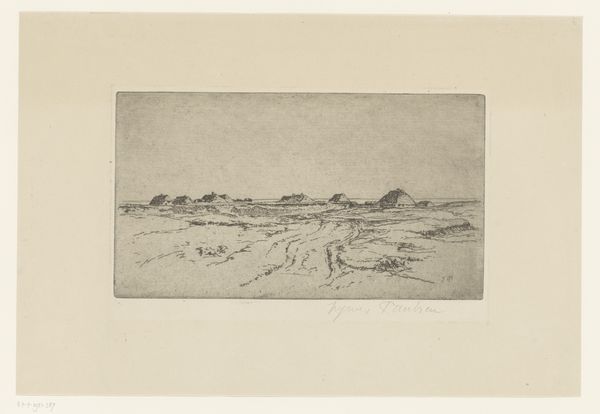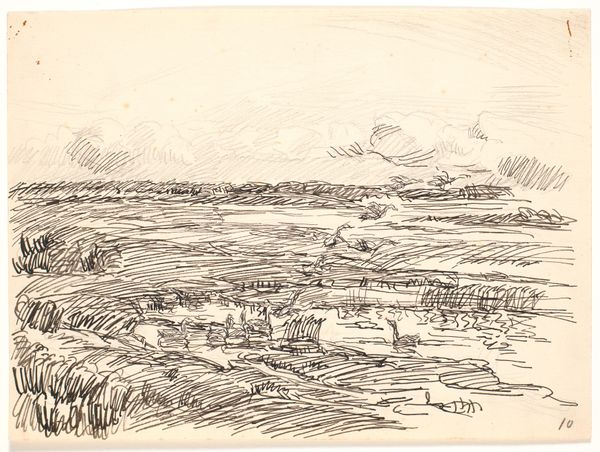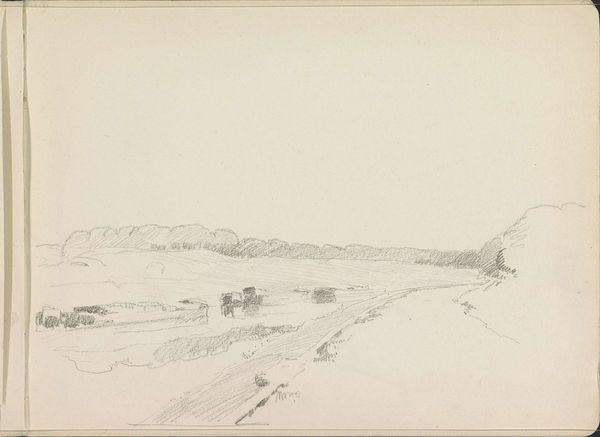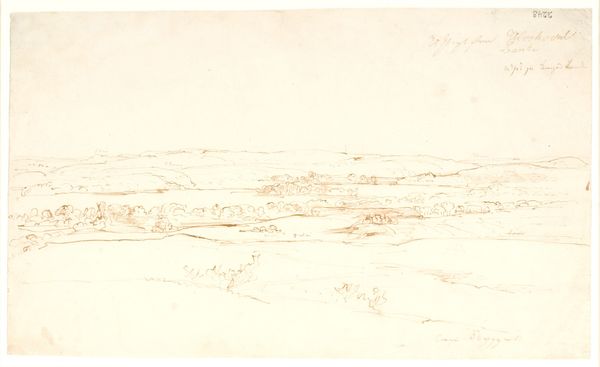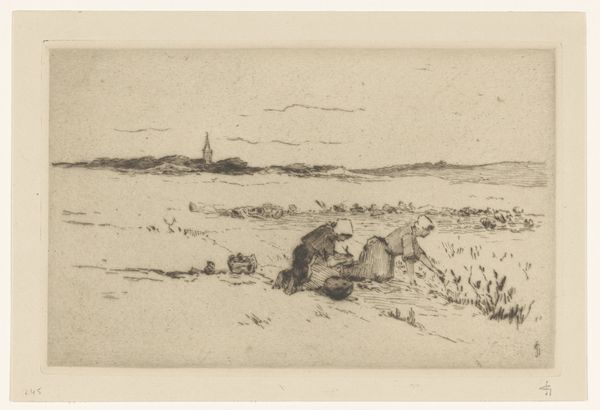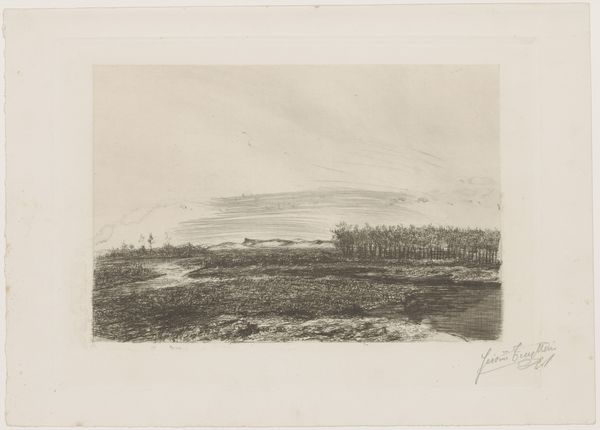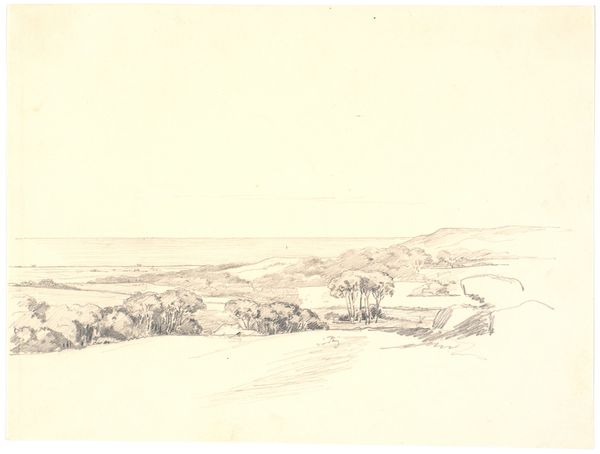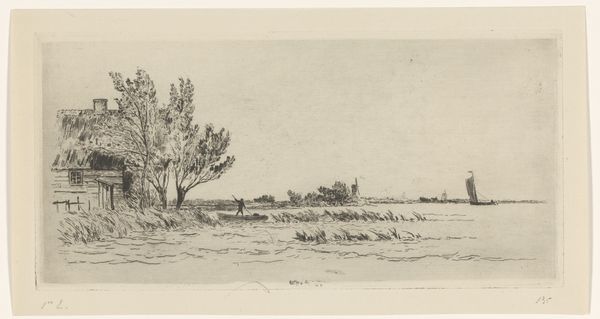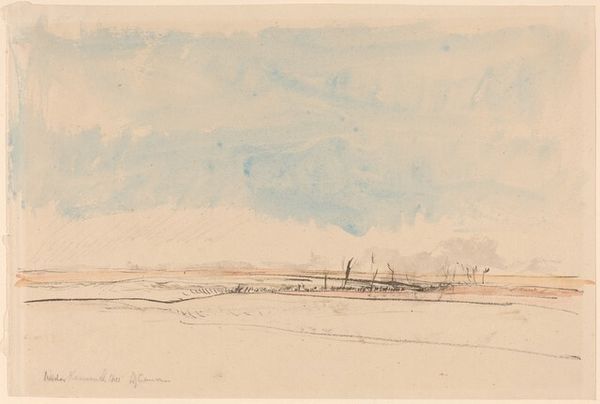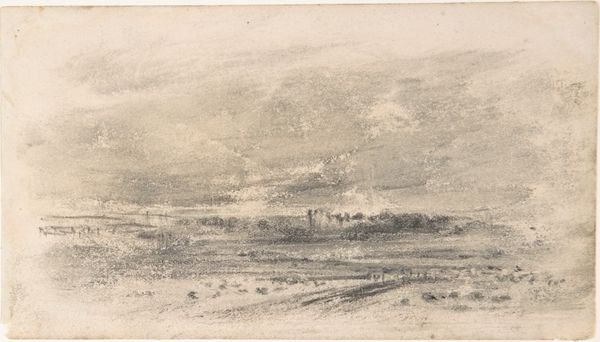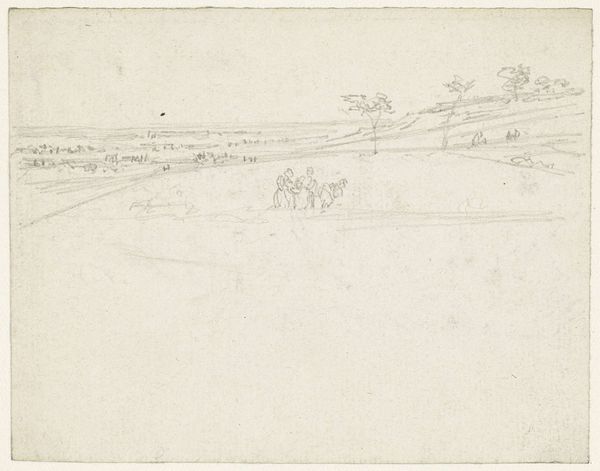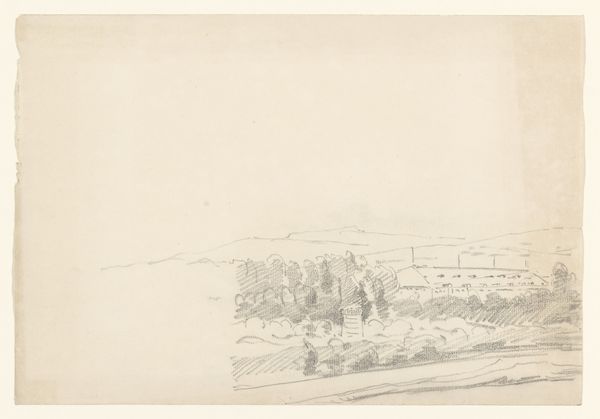
drawing, pencil, graphite
#
drawing
#
pencil sketch
#
landscape
#
pencil
#
graphite
#
realism
Dimensions: 3 3/8 x 7 1/2 in. (8.57 x 19.05 cm)
Copyright: Public Domain
Curator: Walter Shirlaw, around the late 19th century, sketched this landscape scene on what was designated as an Indian Reservation. He used graphite and pencil to capture this slice of life. Editor: Right. The immediate feeling I get is one of sparseness. There's this huge open sky, rendered with the simplest strokes, and the land stretches out flat. There’s almost an emptiness to it, you know? A silent journey on a boundless field. Curator: The reality of the Reservation system in the late 1800s underscores the profound political and social power dynamics at play. Shirlaw, a white artist, capturing this scene inherently positions himself within this imbalance. Who has the right to represent this space? Whose story is being told? These questions come up strongly. Editor: Absolutely. But even taking that framework, I wonder if the loose, sketch-like quality gives us, intentionally or unintentionally, an insight into a life caught on the run, a moment fleeting through space? A sketch, unfinished like that, it carries the weight of incompletion. Curator: I think the ‘unfinishedness’ speaks powerfully to the broken treaties, the displacement, the deliberate and incomplete attempts at cultural erasure during that period. Shirlaw's position in representing this community, this culture, carries that historical and societal baggage whether or not he engaged it directly. Editor: Maybe. Or it's simply a moment on the landscape...I can almost feel the rough canvas of it beneath my own hand, the way graphite moves when it dances just above the paper's grain. There's such immediate lightness that’s captured in this medium, so raw. You know, I think about the horses, the wheels churning in the open. They're passing us in their own story too. Curator: And what might *their* story reveal? Whose voices were omitted in this landscape? Whose existence was systematically marginalized to uphold colonial narratives and what is his own relationship to the American project of settling into the West? Editor: All right, you got me thinking. Perhaps it's less about capturing an instant and more about confronting what remains deliberately unspoken in that time, what's lost in the open range—beyond the wagon. Curator: Precisely. These visual artifacts are sites for us to ask necessary, and sometimes deeply uncomfortable, questions. Art doesn't exist in a vacuum.
Comments
No comments
Be the first to comment and join the conversation on the ultimate creative platform.

